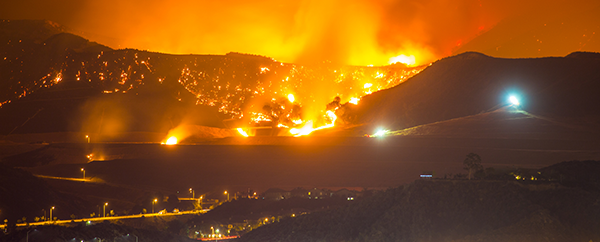As insurance professionals, we help our clients prepare for worst case scenarios. But what would happen if East Coast winter storms result in a four-day power outage or another wildfire hits LA, closing your office? Or what if your computer systems were hit by hackers? How can you ensure that your business can function following a disaster? It’s called a business continuity plan. If you don’t have one, it’s time to create one.
Why is a business continuity plan important for your insurance agency?
- 40 percent of businesses affected by a natural or human-caused disaster never reopen, says FEMA.
- Your customers expect you to be open and operating. If you’re not, they’ll take their accounts elsewhere.
- Your larger business clients will ask you for a preparedness plan, sooner or later. If you don’t have one, you may lose business to a competitor who can demonstrate that they have a plan.
What should a business continuity plan include?
Your plan needs to consider:
- How you will protect the safety of employees and clients, should the emergency happen during business hours
- How you will communicate with employees, clients and industry partners
- How you will maintain your level of service by minimizing business disruptions
- How you will protect your office, furnishings, computers and digital information
- How you will protect your agency’s image and reputation
Related: What’s your insurance agency back-up plan?
How to get started
- First make a list of all hazards that might take place: black-outs, winter storms, theft and vandalism, earthquakes, tornadoes, hurricanes, fire, cyber attack, or a prolonged absence of key personnel, for instance.
- Next, add to your list all of your vulnerabilities, from your staff and physical office to your files and information technology.
- Third, analyze the impact of these occurrences on your business with a business impact analysis (BIA). FEMA has a worksheet that you can use.
Life safety is priority one when an emergency occurs, followed closely by stabilizing the incident and minimizing potential damage. First aid and CPR by employees that you’ve identified and trained beforehand can save lives. Making sure everyone knows where fire extinguishers are located, and how to use them, can extinguish a small fire. Training everyone where the best places for safety are in the event of a tornado or earthquake is also essential.
Many severe weather events can be forecasted at least a few hours ahead of their impact, providing valuable time to enact an emergency plan. Now’s the time to enact your agency’s plan complete with resources that are either on hand or available quickly. Your plan needs to include processes for damage assessment, salvage, protection of undamaged property and cleanup. These actions will minimize further damage and business disruption.
You need to have a clearly communicated plan for each potential incident, from fires to bomb threats (when and how to evacuate), to threats of violence or a nearby chemical spill (shelter inside the building).
How to communicate
An important aspect of your preparedness is your crisis communications plan, enabling your agency to respond promptly and confidently during an emergency within hours – and days to come. Make a list of the types of audiences with whom you’ll need to communicate, from employees to clients. Additionally, your insurance agency’s plan should include who will speak with news media personnel and the community at large – and what can or should not be said. Learn more about a crisis communications plan here.
Related: Put emergency plans in place during National Preparedness Month
Additional resources
FEMA has a robust website full of worksheets, tools and other valuable information that can be of help:
- Business continuity
- IT disaster recovery plan
- Employee communication
- Business continuity planning suite
Prepare your insurance agency now to maintain business-as-usual with a continuity plan.

